Dr. Phil Zeltzman’s Blog
Squirrel gets a new lease on life after cleft palate surgery
Squirrel, a 2 year old bully mix, had an unusual problem.
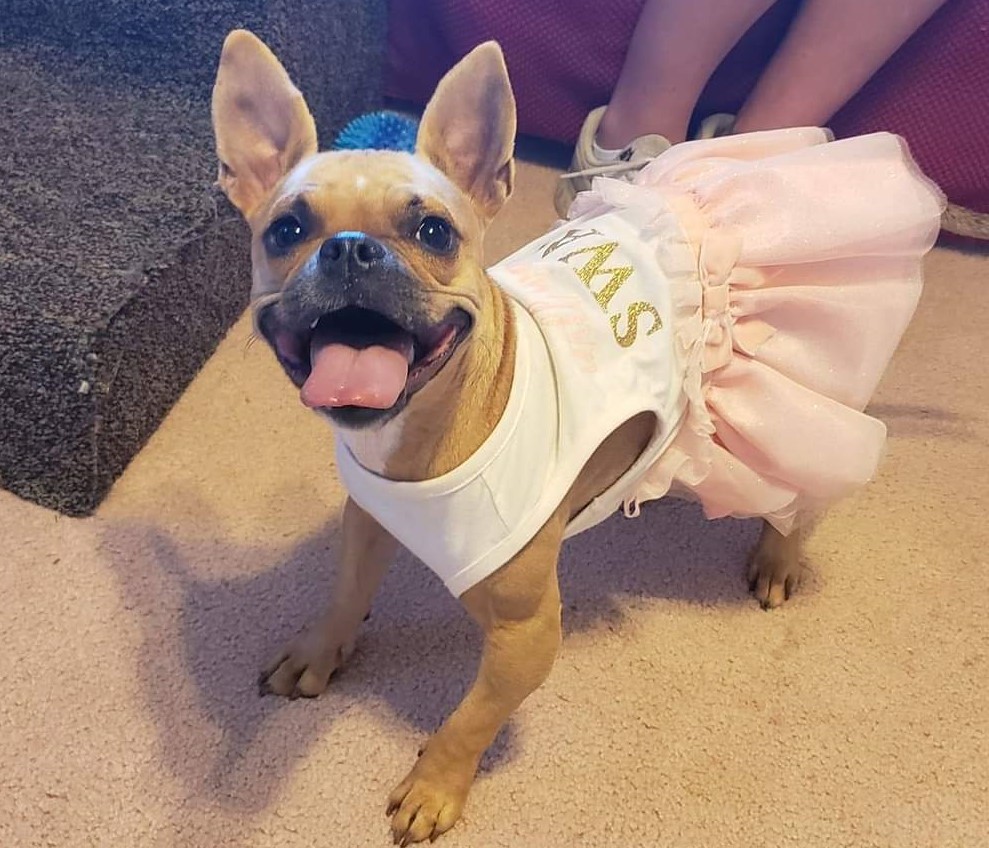
She was struggling with eating and drinking on her own, as well as playing and chewing on toys.
Thick, white mucus would build up and make it hard for her to swallow or breathe through her nose.
Because of that, it was difficult for her to gain weight.
This is how she looked when she was first adopted.
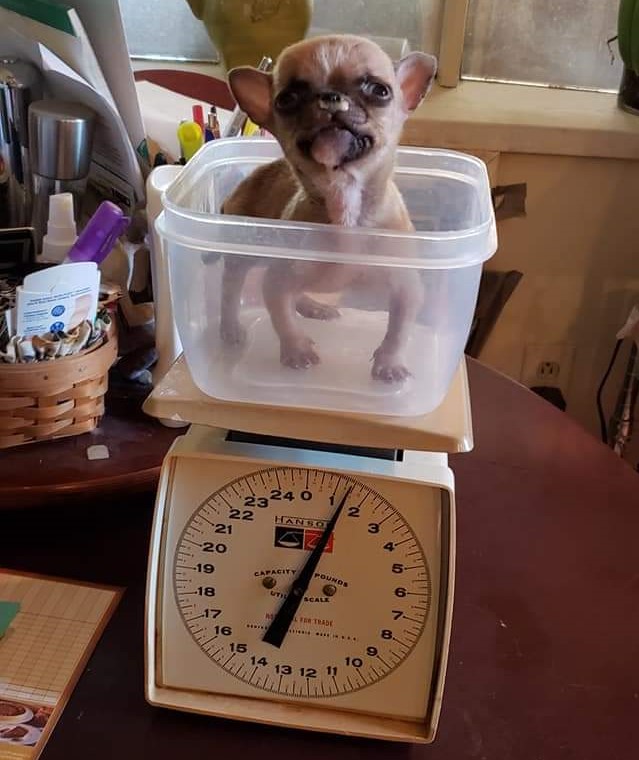
Her foster explained: “She is choking & sneezing food and mucus out her nose every day, anytime she moves around, plays or chews on toys.”
“We almost lost her a few times the first year,” said her foster. “So she is a fighter for sure. She is a spunky little thing loving life!”
Her diagnosis? A cleft palate.
This means that there was a split in the roof of the mouth (similarly, a cleft lip is a split in the lip).
That split allowed food and water to go up in the nasal passages, causing difficulty breathing and constant infections.
That also meant that she could not get the proper nutrition her body needed to grow properly.
This is the reason why a puppy (or a kitten) with a cleft palate is typically the runt of the litter.
Now, a bit of anatomy. When you touch the roof of your mouth, it is firm because there is bone behind it. You are touching your “hard” palate.
PICTURES OF THE CLEFT BELOW ARE GRAPHIC AND ARE NOT FOR THE FAINT OF HEART.
The bone then disappears in the back of the mouth, so that part of the palate is called the “soft” palate.
Based on preop pictures, Squirrel clearly had a cleft of the hard palate.
The surprise came when we put her under anesthesia. A more thorough exam revealed a cleft in 100% of the roof of the mouth. So little Squirrel had a cleft of the hard palate and the soft palate.
In all of the pictures of the mouth below, Squirrel is on her back, and you see the inside of the roof of the mouth.
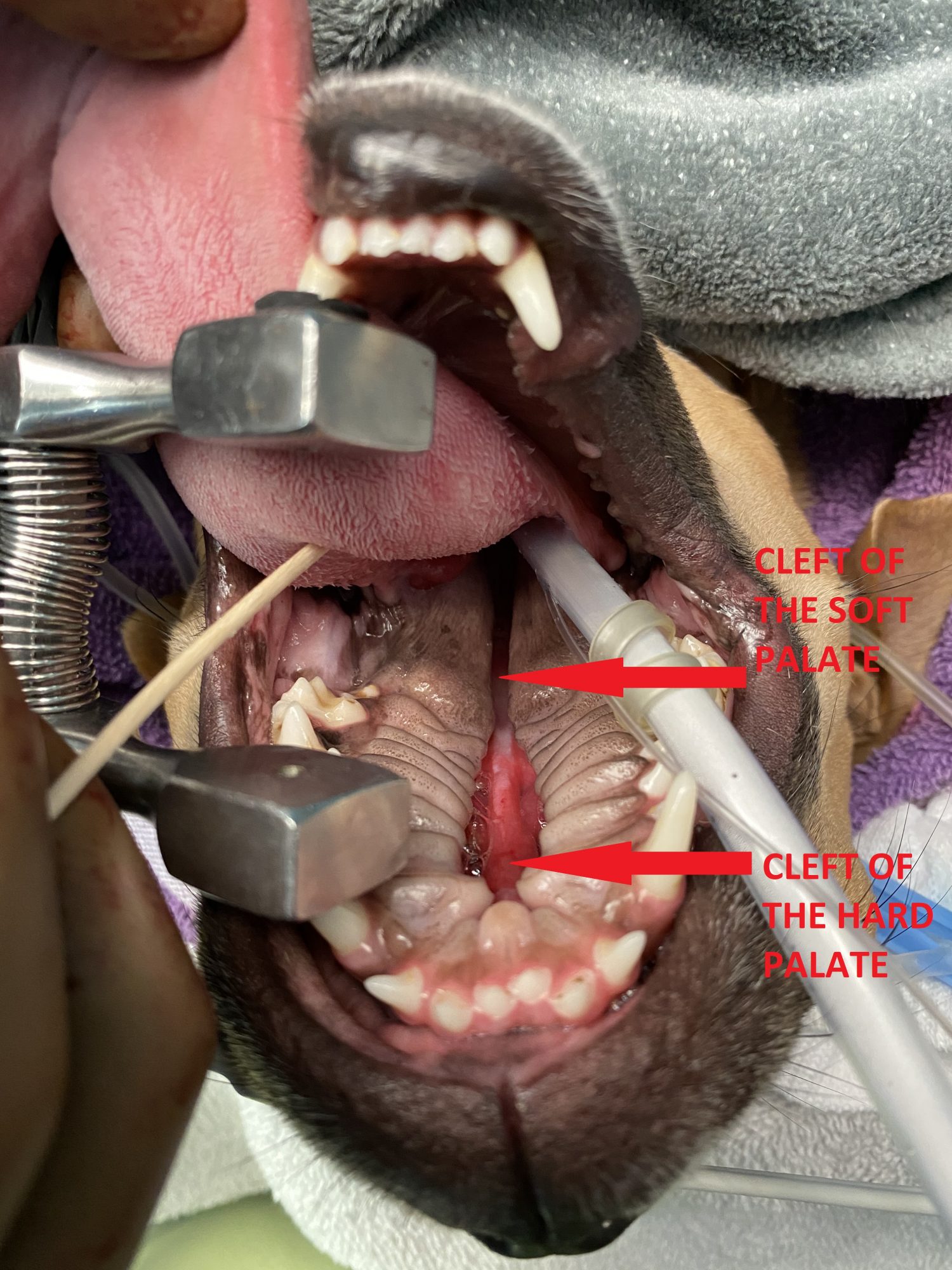
Surgery entailed stealing tissue from Peter to give to Paul.
WARNING: THE PICTURES BELOW ARE GRAPHIC, SO CONTINUE AT YOUR OWN RISK.
We created a “flap” by using healthy tissue from each side of the roof of the mouth to cover the defect or split in the middle.
In the end, we were able to cover the entire defect in the hard and the soft palate.
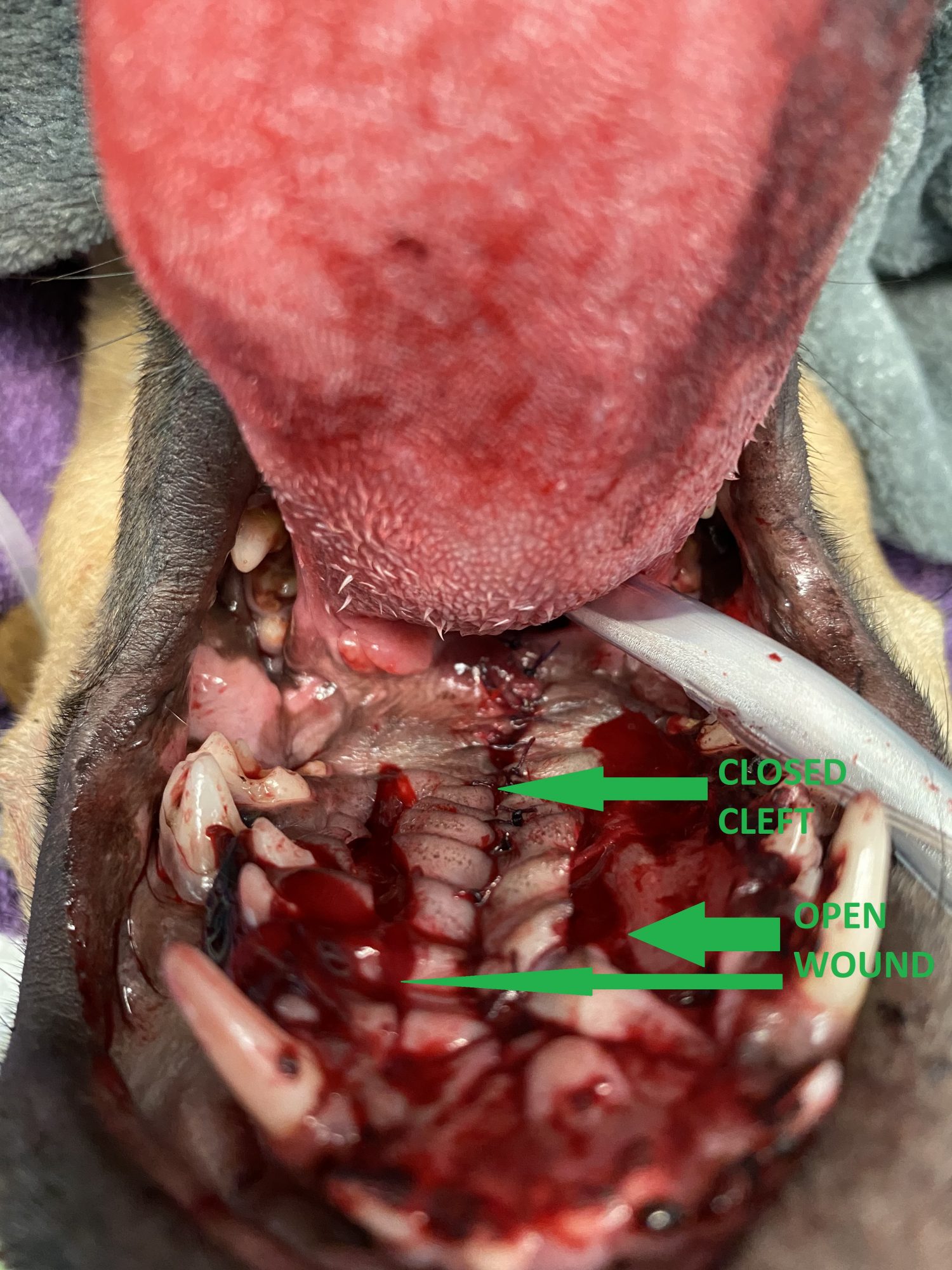
Squirrel went home safely the day of surgery.
She had to be kept quiet and away from chew toys and hard food for 3 weeks to protect the surgery site and the stitches.
Her foster took exceptional care of her… She did not spoil her at all as you can see in this picture…
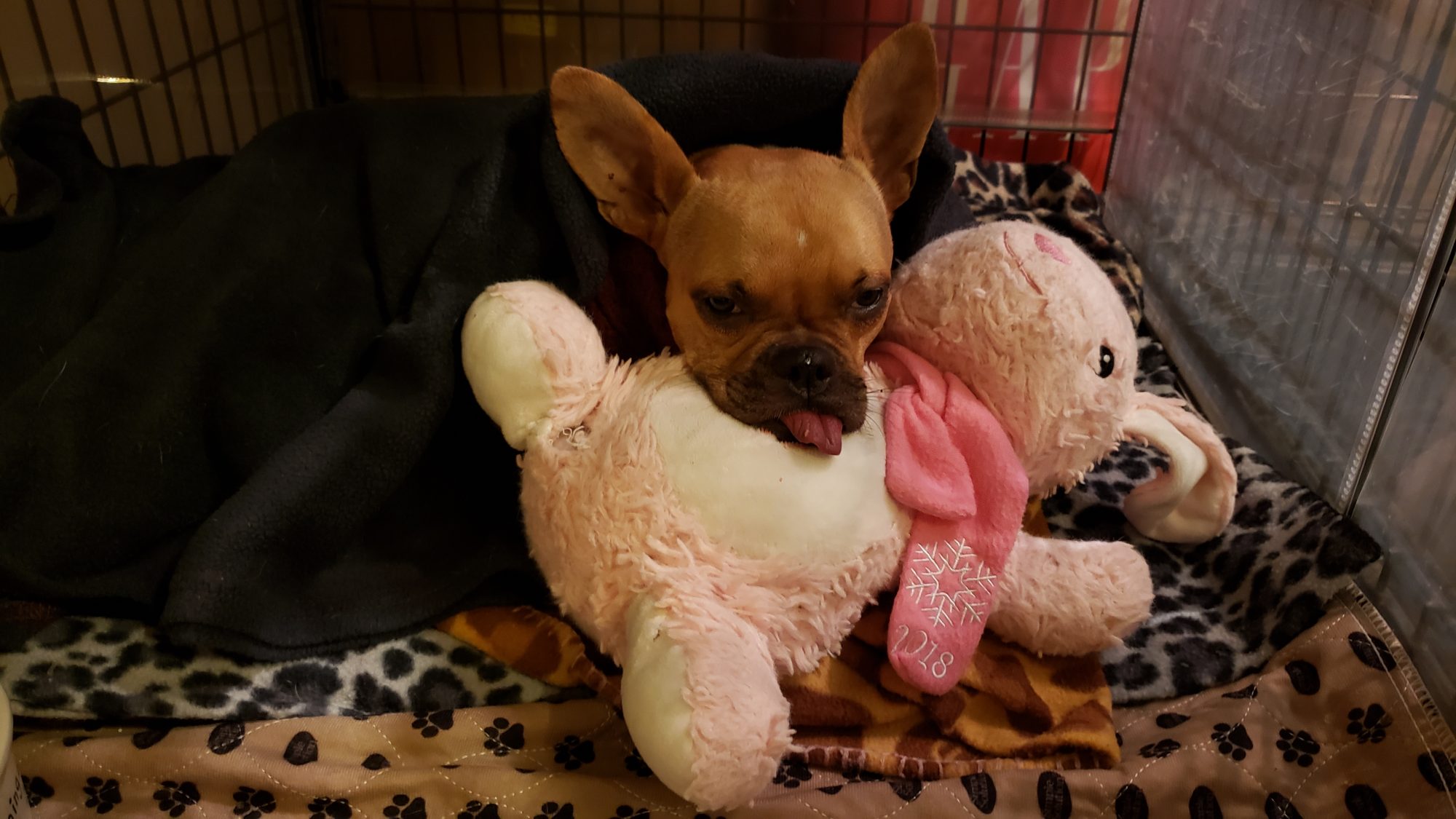
Only two days after surgery, her foster commented: “She is eating watered-down canned food, and lots of it. She is also drinking better. Hardly any sneezes. She doesn’t seem painful. I am amazed at how well she is doing honestly!! She seems surprised she can breathe through her nose and not sneezing.”
Four days after surgery, she kept improving: “Squirrel is now eating soft can food. No water added. She ate half a can this morning.”
Three weeks after surgery, we examined her mouth under sedation to assess the surgery site.
Thankfully, 100% of the surgery area “took.” The left side of the mouth (the pink area) still needed a bit more time to heal as nicely as the right, but I was reassured that everything worked out after the first surgery.
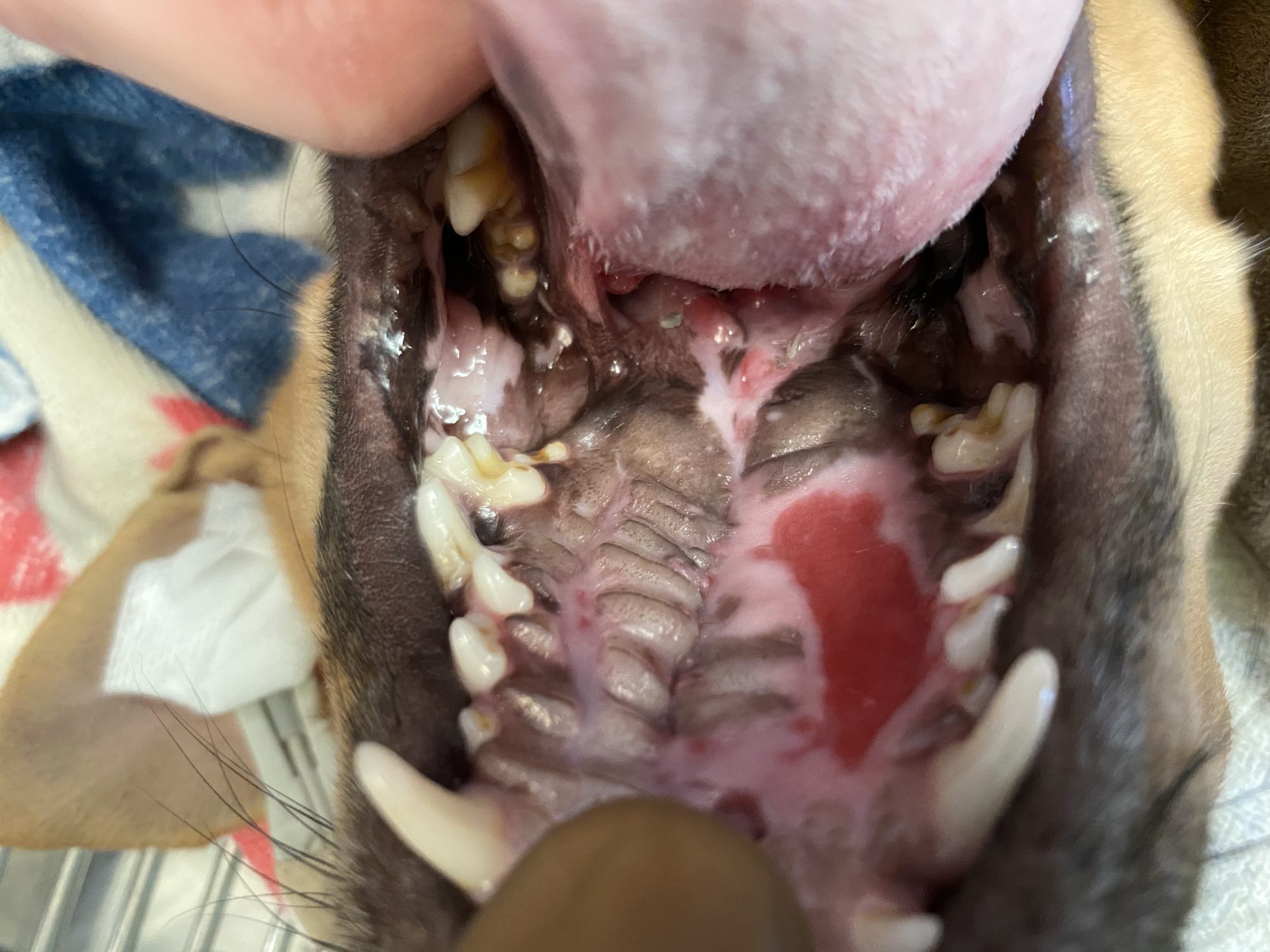
Squirrel’s foster concludes: “I cannot thank you enough for giving her this gift! She now has a new lease on life.”
Phil Zeltzman, DVM, DACVS, CVJ, FFcert.

Dr. Phil Zeltzman is a traveling veterinary surgeon in Pennsylvania & New Jersey. An award-winning author, he loves to share his adventures in practice along with information about vet medicine and surgery that can really help your pets. Dr. Zeltzman specializes in orthopedic, neurologic, cancer, and soft tissue surgeries for dogs, cats, and small exotics. By working with local family vets, he offers the best surgical care, safest anesthesia, and utmost pain management to all his patients. Sign up to get an email when he updates his blog, and follow him on Facebook, too!
How Callie was saved by love and dedication
Callie, a very cute kitten, had a rare condition called a cleft palate.
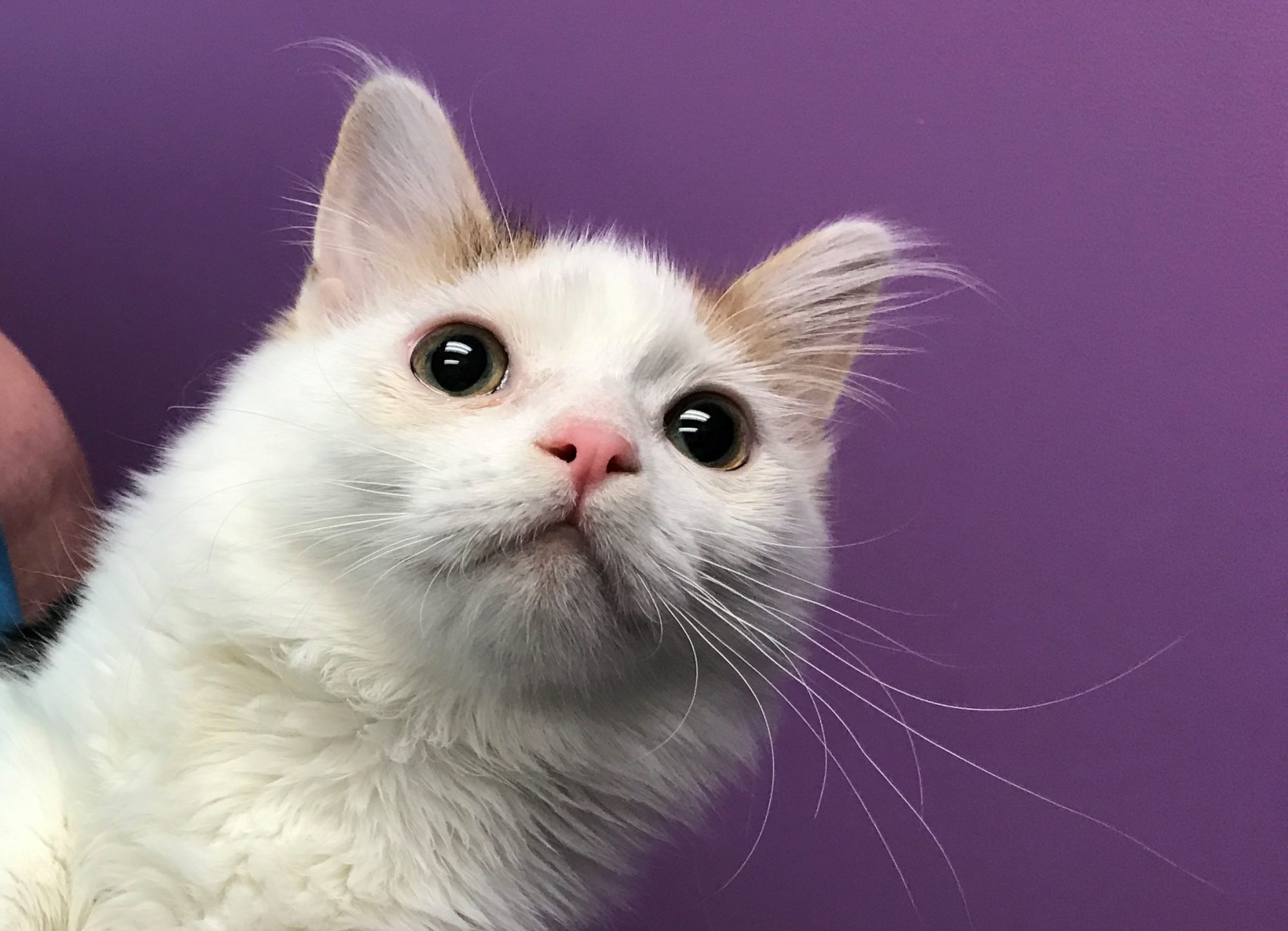
This is an abnormal opening in the roof of the mouth that allows food to go into the nose. This causes gagging, choking, severe sneezing, infections of the nose and difficulty breathing.
In addition, affected pets don’t thrive. They are typically malnourished because it’s difficult to feed them enough to help them grow.
When her owner reached out to me to help with the surgery, Callie was only 6 weeks and weight only 1 pound. Her incredibly dedicated owner had already been through a lot, since she had bottle fed Callie from birth.
Doing surgery to close the “hole” in not recommended in such a young kitten.
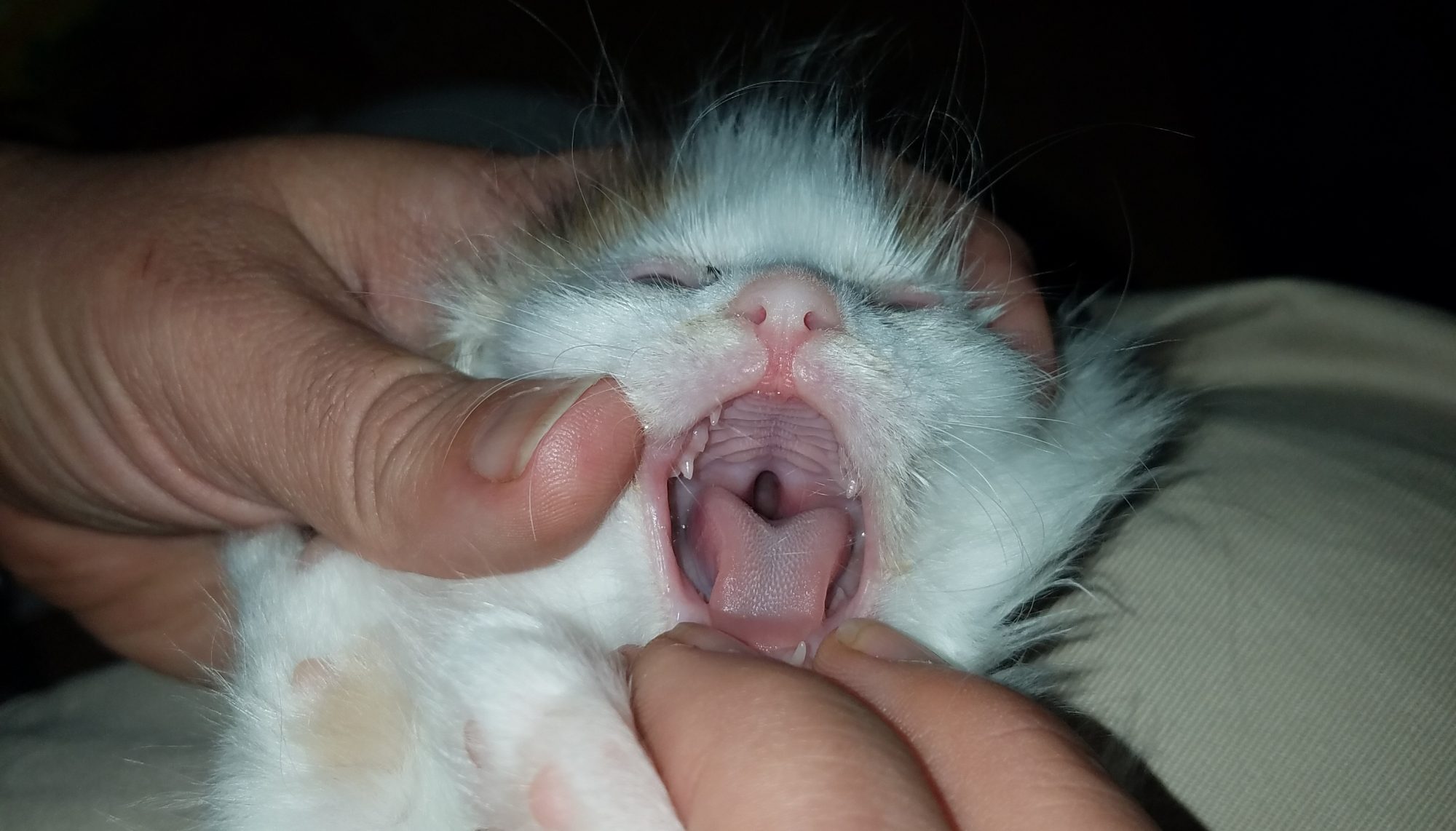
Callie at 6 weeks of age
So we agreed that we would try to hang in there until Callie is older and stronger. She needed to be a better candidate for anesthesia and surgery. Until then, family members had to take turns to feed Callie slurry every few hours.
Long story short, Callie grew stronger and eventually had surgery at Brodheadsville Veterinary Clinic (www.brodheadsvillevet.com) when she turned 8 months. On the picture below, Callie is on her back on the surgery table. The red arrow shows the normal part of the front of the roof of the mouth. The green arrow shows the hole in the back part of the roof of the mouth, ie the cleft palate.
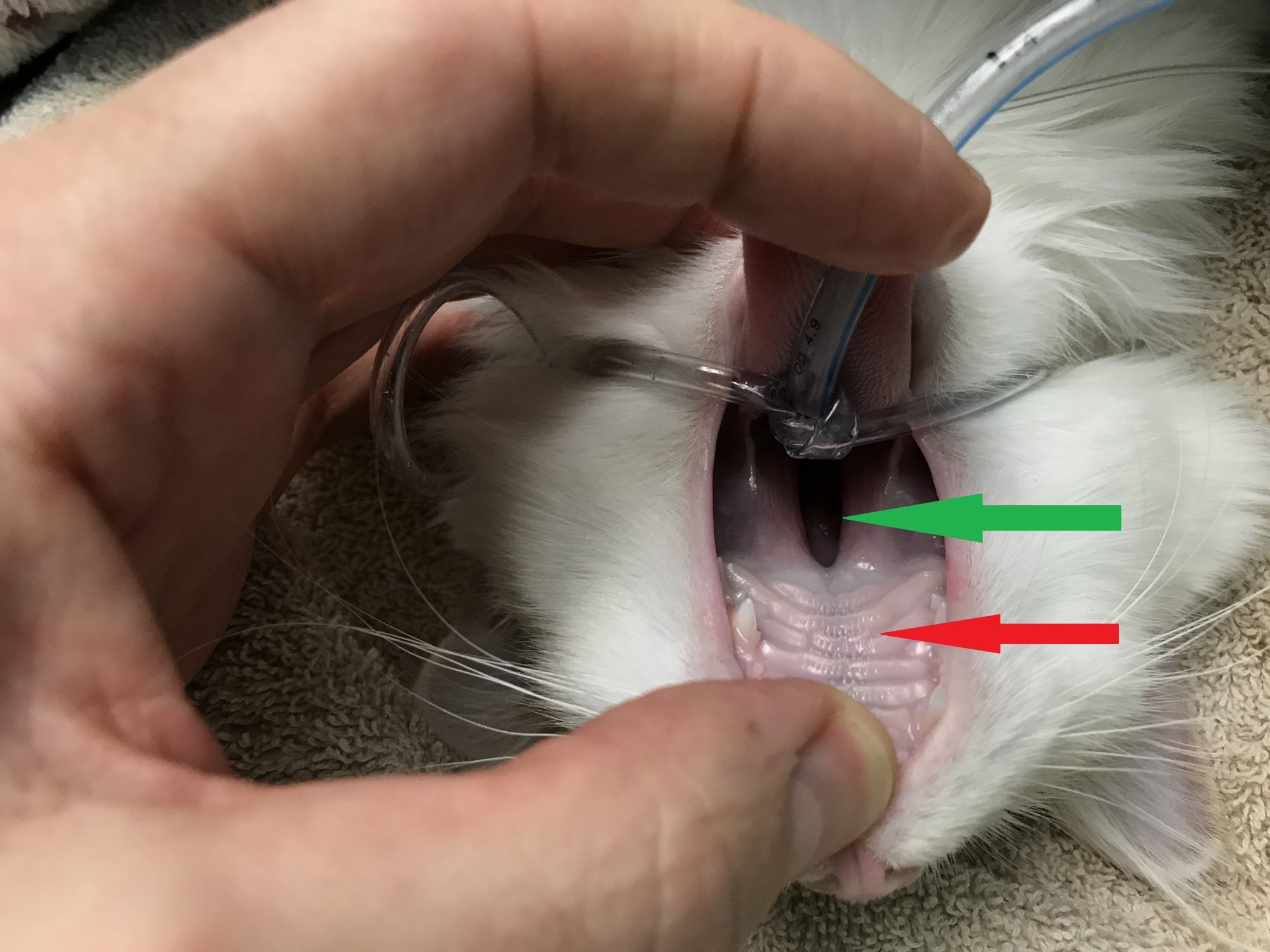
Callie made it through surgery with flying colors and woke up smoothly after anesthesia. The picture below shows the stiched-up opening.
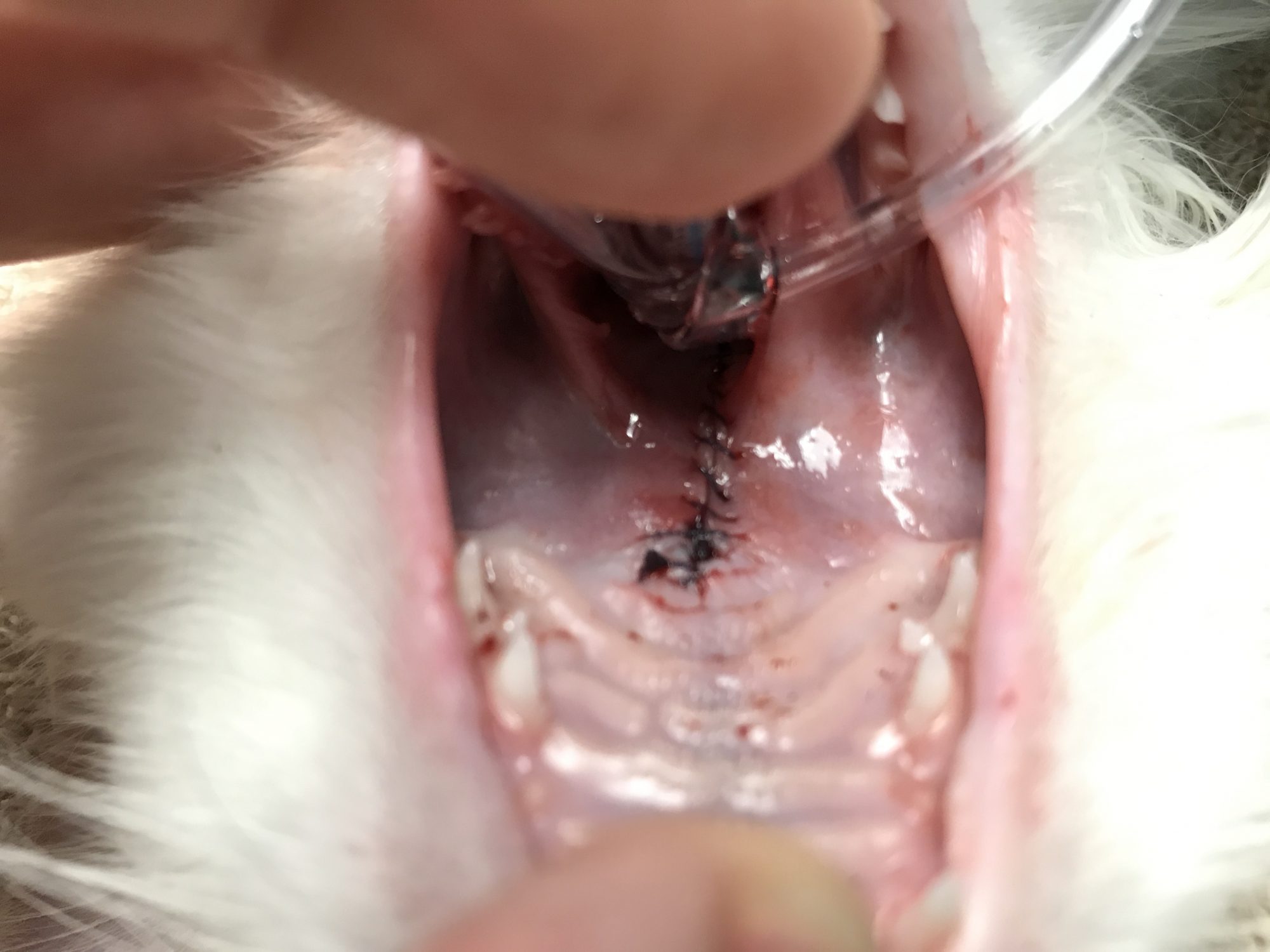
Once home, she immediately started eating whatever was put in front of her. There was no sneezing, coughing or gagging.
Callie’s owner writes: “It was so amazing! I can hardly find words to describe how it felt to see her eat like a normal kitten.” She quickly put on a pound.
About 2 weeks after the surgery, bubbles started to come out of Callie’s nose after eating or drinking. What happened is that one tiny area didn’t heal properly. This can happen, and we had discussed that possibility during the consultation. So we did another surgery, minor this time, to close the tiny pinhole.
“Since that second operation, she has had no problems eating or drinking anything. She seems to prefer dry food over wet, now that she doesn’t have to worry about gagging it up.”
“She just turned 1 year of age and now weighs about 9.5 lbs. She is a happy, energetic, precocious cat that looks like a kitten and we can’t imagine life without her.”
I love Callie’s story because it’s such a perfect example of how one loving human can dedicate so much time of energy and save one tiny kitten’s life.
Many, many people would have given up. But not Callie’s owner. She is now rewarded with a beautiful, healthy cat who can enjoy life.
Phil Zeltzman, DVM, DACVS, CVJ, Fear Free Certified

Dr. Phil Zeltzman is a traveling veterinary surgeon in Pennsylvania & New Jersey. An award-winning author, he loves to share his adventures in practice along with information about vet medicine and surgery that can really help your pets. Dr. Zeltzman specializes in orthopedic, neurologic, cancer, and soft tissue surgeries for dogs, cats, and small exotics. By working with local family vets, he offers the best surgical care, safest anesthesia, and utmost pain management to all his patients. Sign up to get an email when he updates his blog, and follow him on Facebook, too!

